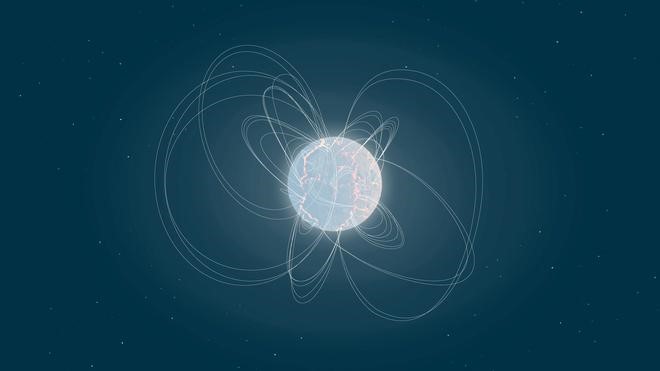
Magnetar

27.04.2024
Magnetar
|
For Prelims: About Magnetar, What is Messier 82?, Key facts about the Galaxy |
Why in the news?
Scientists have now detected the most distant-known instance of eruptions, called a giant flare, from a magnetar residing in a galaxy called Messier 82.
About Magnetar:
- It is an exotic type of neutron star with the defining feature that it has an ultra-powerful magnetic field.
- The field is about 1,000 times stronger than a normal neutron star and about a trillion times stronger than the Earth’s.
- Apart from ultra-powerful magnetic fields, magnetars also release vast amounts of energy in the form of flares, X-rays and gamma-ray bursts.
- They are therefore associated with extreme events in the universe, making them perhaps the most bizarre objects in the cosmos next to black holes.
- The magnetic field of a magnetar may be caused by a neutron star’s interior – thought to be made up of neutrons, quarks and exotic states of matter such as Bose-Einstein Condensates – becoming a superconducting fluid.
- Thus, when the star rotates, it would behave like a huge dynamo, generating an immense magnetic field.
What is Messier 82?
- It is a galaxy nicknamed "cigar galaxy" because when viewed edge-on it has an elongated and cigar-like shape. It is 12 million light-years from Earth in the constellation Ursa Major.
- The M82 giant flare was the most distant known but not the most energetic.
- A giant flare originates from a reconfiguration and a reconnection of the magnetic field of the magnetar.
Key facts about the Galaxy:
- It consists of stars, planets, and vast clouds of gas and dust, all bound together by gravity. The largest contain trillions of stars and can be more than a million light-years across.
- The smallest can contain a few thousand stars and span just a few hundred light-years. Most large galaxies have supermassive black holes at their centers, some with billions of times the Sun’s mass.
- It comes in a variety of shapes, mostly spirals and ellipticals, as well as those with less orderly appearances, usually dubbed irregular.
- Most galaxies are between 10 billion and 13.6 billion years old. Some are almost as old as the universe itself, which formed around 13.8 billion years ago. Astronomers think the youngest known galaxy formed approximately 500 million years ago.
Source: The Hindu